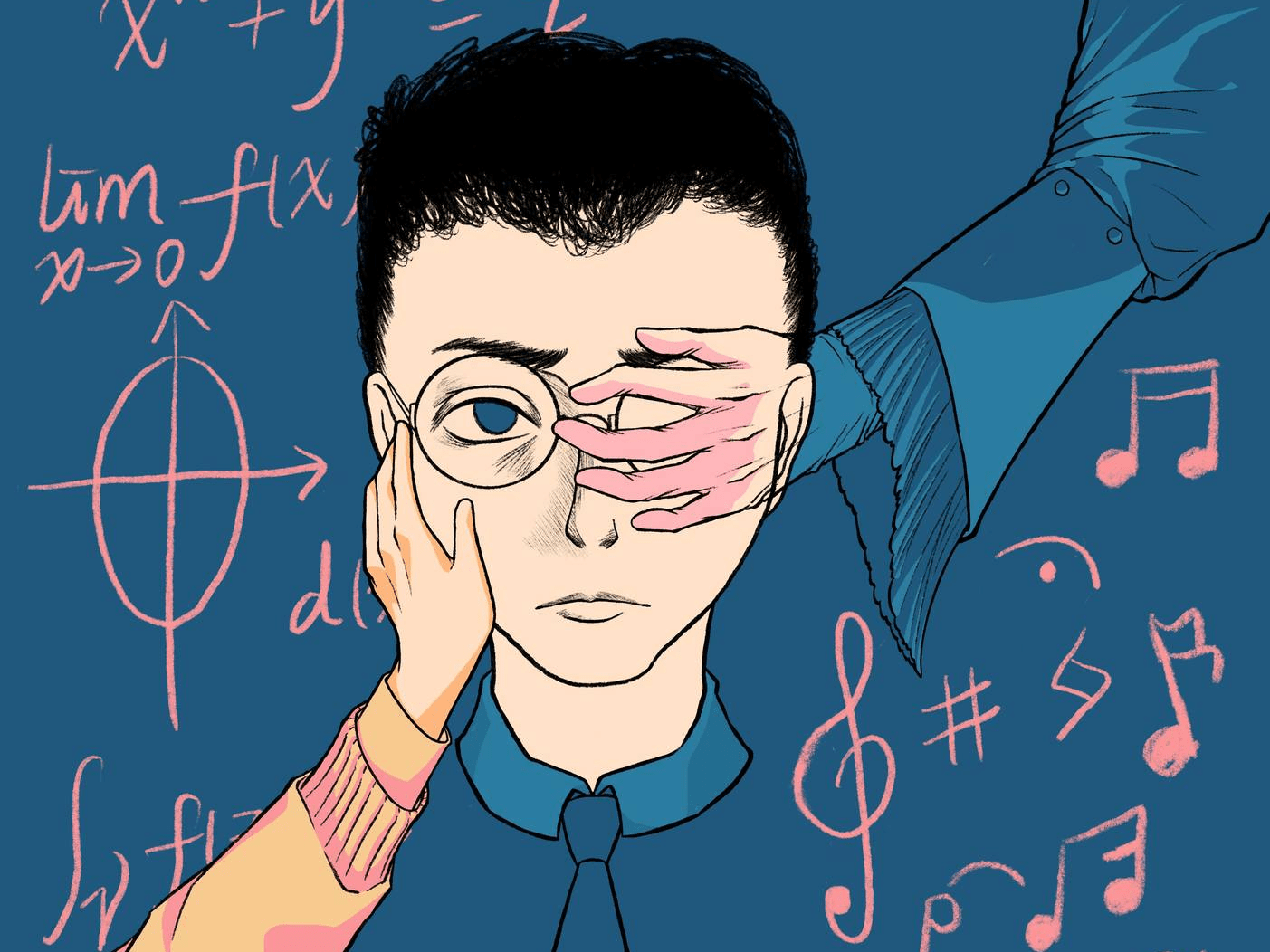by Jerric Chong
For most of us, I suppose, the words ‘maths’ and ‘humour’ will rarely appear in the same sentence, let alone alongside each other. But not after attending Fermat’s Last Tango, performed by a cast and crew of Oxford students at the Mathematical Institute, which despite its niche subject matter succeeds in providing splendid entertainment and comedic whimsy, and not just for the mathematicians.
Written in 2000 as an off-Broadway musical by Joshua Rosenblum and Joanne Sydney Lessner, it dramatises the true story of the British mathematician Sir Andrew Wiles, who proved Fermat’s Last Theorem: a conjecture in number theory stating that no three positive whole numbers can satisfy the equation an + bn = cn if n is greater than 2. While deceptively simple, no mathematician had been able to accomplish it for 358 years since Pierre de Fermat cryptically hinted that he had a proof but the margin he was scribbling in was ‘not large enough to contain’ it. Here, Wiles is transformed into the bookish Professor Daniel Keane (Lois Heslop), who emerges from seven years of solitary labour on Fermat’s Last Theorem and encounters none other than Pierre de Fermat (Siddiq Islam) himself. Introduced to other mathematical greats – Pythagoras, Euclid, Newton and Gauss – in a purgatory-like ‘Aftermath’, Keane is informed that his proof has a ‘big fat hole’, much to his chagrin, and of his wife Anna (Isabella Diaz Pascual), who hopes finally to return to a normal life with him.
With not infrequent mentions of ‘modular forms’, ‘elliptic curves’ and the ‘Shimura–Taniyama conjecture’, one might be forgiven in thinking that Fermat’s Last Tango, like its namesake theorem, may be too abstruse to be appreciable. But that notion is quickly dispelled by the musical’s emphasis on telling an exciting story involving characters with disparate personalities, with an almost entirely sung-through score and encompassing a wide array of styles from opera to blues. This production had Lois Heslop playing the role of Professor Daniel Keane with flair, adapting herself to a range of scenes, from agonising in front of a desk and answering a troupe of reporters to participating in a whimsical game show and dancing the titular three-person tango with Anne and Fermat. Isabella Diaz Pascual lent herself well to the part of a sidelined spouse seeking a mended relationship, and I found her interactions with Heslop to be broadly convincing. Her most noteworthy scene was doubtless her rage aria ‘Math Widow’, sung energetically with much spirit and verve – this rightly earned great plaudits from spectators. The quartet of mathematicians had nice moments as well, especially in ‘The Aftermath’, in which they effortlessly transitioned between hymn-like homophony to complex counterpoint. Nevertheless, I found that the pre-eminent member of the cast was indisputably Siddiq Islam (an Orielensis, and editor of this paper) as the title character, who brought exceptional panache that perfectly suited his character’s always flamboyant and occasionally derisive personality while swanning around in wig and cape – still congenial, even if eccentric. And don’t just take my (unbiased, honest) word for it: he and his quips certainly got the largest audience laughs.
Unlike most student productions in Oxford, this show is uniquely performed within one of the lecture theatres in the Andrew Wiles Building – particularly appropriate given its subject matter, and it is obviously apt that it be held in the venue named after the mathematician behind the protagonist. Naturally, this presented the cast and crew with a smaller ‘stage’ area than might have been obtained otherwise, but they easily adapted to a variety of scenes through the use of minimal props, such as a writing desk for Keane or large polyhedra to represent the Aftermath. This was successful, but I almost wished that the moving whiteboards behind the stage could also have been used narratively, instead of statically displaying a statement of Fermat’s Last Theorem. The small nine-piece band, conducted by Fred Tyrrell – who also helped to orchestrate and arrange the music for this production – was placed to the far left of the ‘stage’. They are to be commended for their endurance in providing an almost continuous backdrop to the action and in handling a wide assortment of styles, moving deftly from classical to jazz and swing with agility. One quibble I noted was that the instruments were not quite well balanced with each other or the cast at times; the sound of the violin in particular often seemed to be drowned out, but this did not hamper my enjoyment of the show. The set lighting, achieved with portable equipment, was effective.
This production, the first staging of Fermat’s Last Tango in the UK, has been eagerly anticipated among the mathematics community of Oxford, not least because Sir Andrew Wiles is a professor here. But this is not just a musical for mathematicians or STEM students. With lively acting and boisterous tunes, there is certainly something in maths humour for all to enjoy here – even if you don’t know how to construct Galois representations of elliptic curves.
Fermat’s Last Tango ran from Thursday 2 March to Sunday 5 March at the Andrew Wiles Building, Mathematical Institute.
The Poor Print would like to thank Empty Set Productions for providing a complimentary review ticket.

